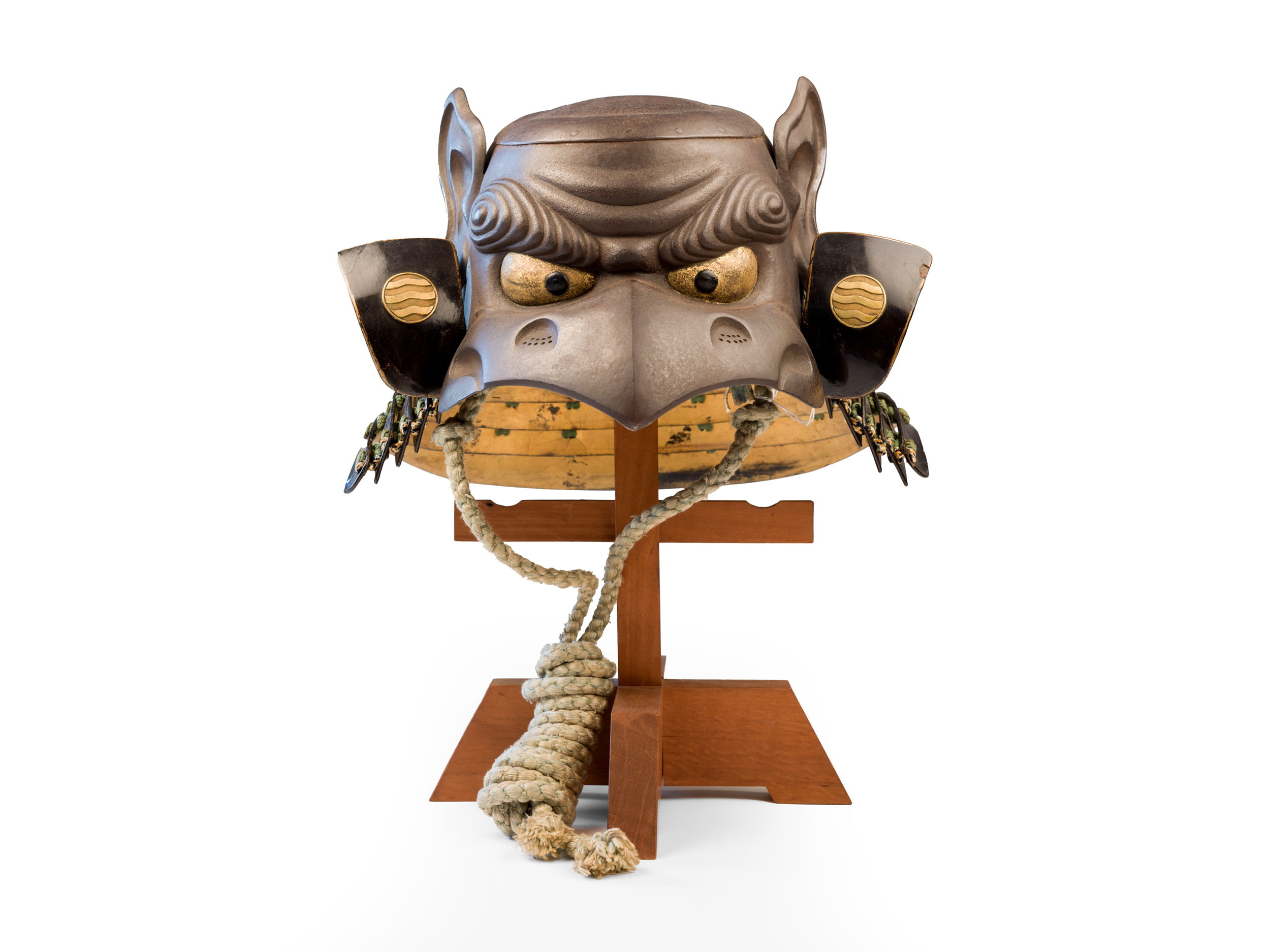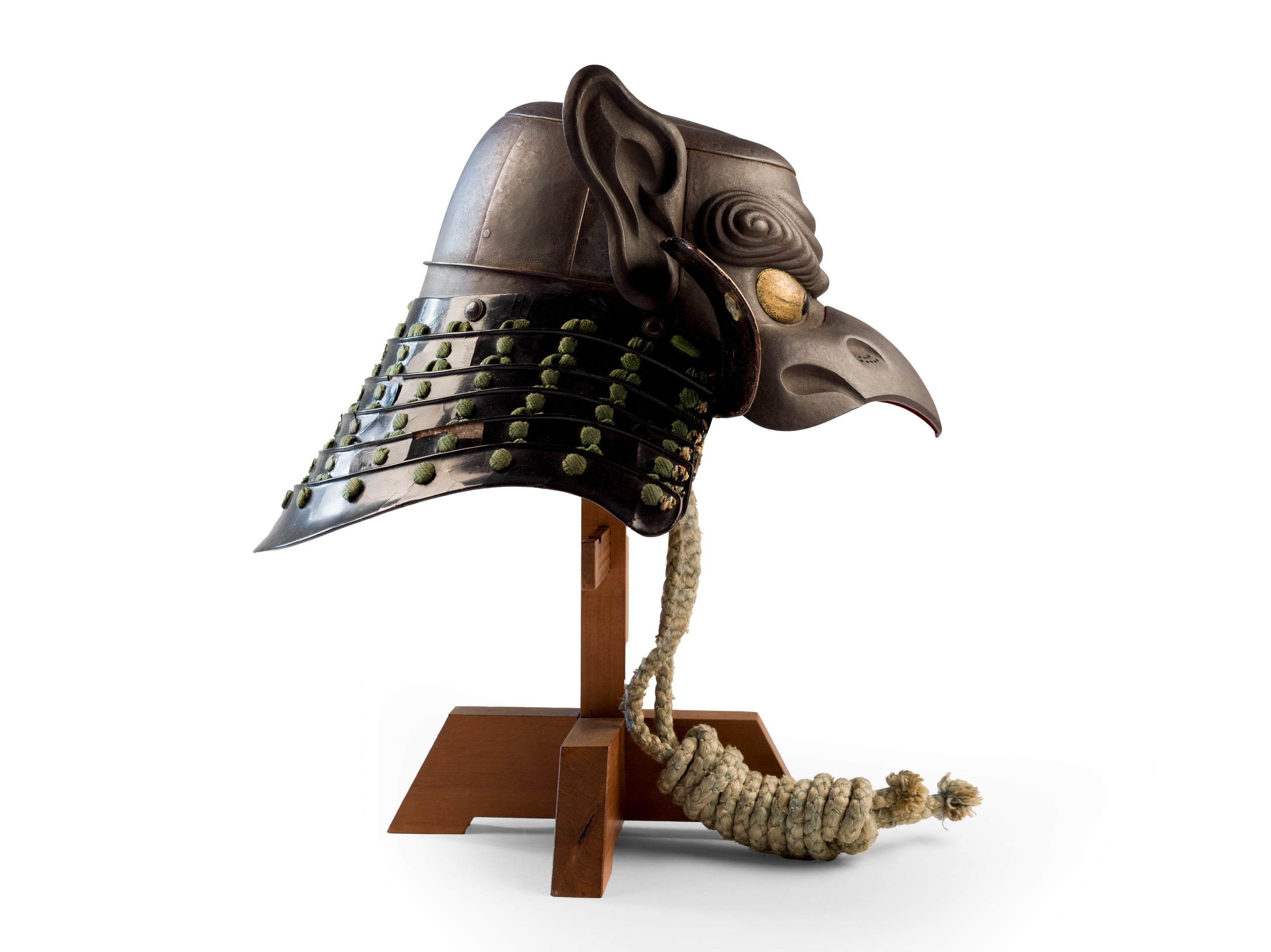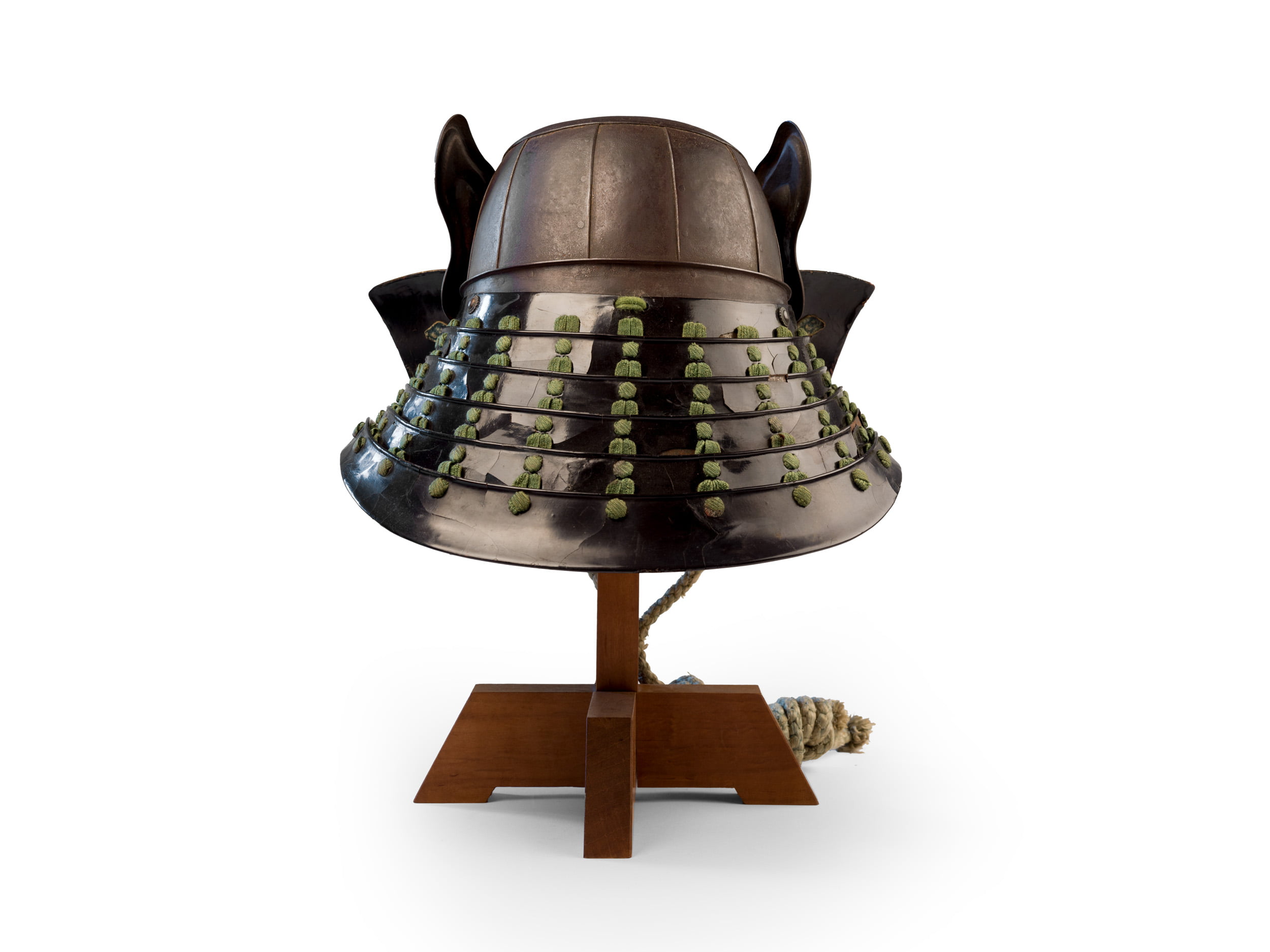Constructed of eight plates riveted together forming a broad helmet bowl with a low profile, the front plate hammered and carved to form the face of a fierce tengu, the eyebrows boldly carved in swirling whorls above black and gold lacquered eyes, the mabizashi in the form of the tengu’s beak with pierced nostrils for ventilation, flanked by lacquered fukigaeshi, each with a mon (crest) of three wavy stripes, all above the five-lame shikoro lacquered brown to the exterior and gold to the interior.
Kawari kabuto (lit. ‘transformed helmet’) refers to strange or eccentric helmets. During the Momoyama period of intense civil warfare, kabuto were made to a simpler design lacking many of the ornamental features of earlier helmets. To offset the plain, utilitarian form of the new helmet, and to provide visibility and presence on the battlefield, armorers began to build fantastic shapes on top of the simple helmets in harikake (papier-mâché mixed with lacquer over a wooden armature), though some were constructed entirely of iron. These shapes mimicked forms from Japanese culture and mythology, including fish, cow horns, the head of the god of longevity, bolts of silk, head scarves, Ichi-no-Tani canyon, and axe heads, among many others. Some forms were realistically rendered, while others took on a very futuristic, modernist feel.
The Tengu, literally meaning “heavenly dog” in Japanese, is a complex figure in Japanese mythology. They can be seen as both mischievous tricksters and protectors of the mountains and forests. Here’s a breakdown of their key characteristics:



Private Collection, Zürich
Kunstberatung Zürich AG
Börsenstrasse 27 8001 Zürich Switzerland
VAT Number: CHE-113.608.140
+41 44 381 50 40
contact@kunstberatung-zurich.com
©2025 Kunstberatung Zürich AG No part of this website may be reproduced, distributed, stored in a retrieval system or transmitted in any form or by any means, electronic, mechanical, or otherwise, without the prior permission of Kunstberatung Zürich AG.